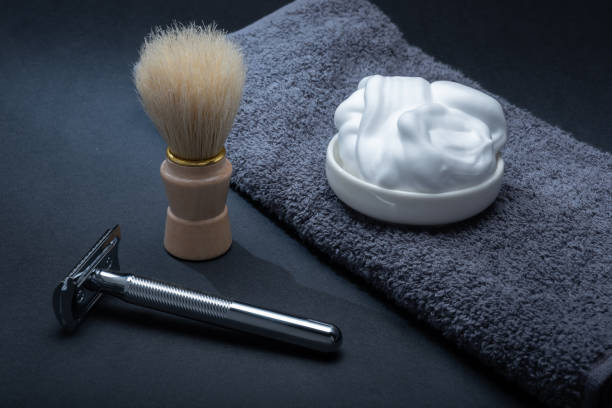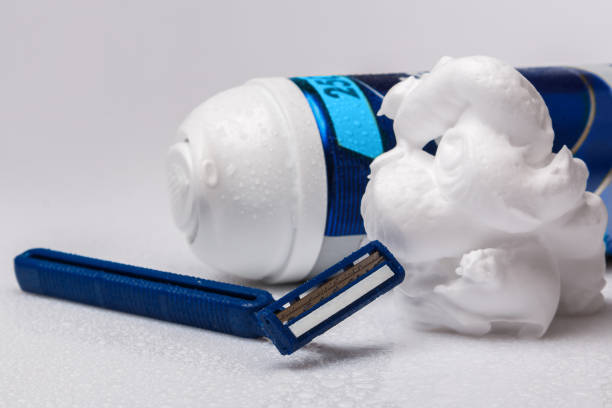Shaving cream is a multipurpose household item that does more than just make shaving easier. Shaving cream can be used in a variety of tasks, such as creating prints and cleaning car seats.
In a nutshell, vacuuming the surface dirt, applying shaving cream with a sponge or soft-bristled brush, wiping the seats clean, and allowing them to air dry are the steps in how to clean car seats with shaving cream. Get a thorough explanation by continuing to read.
Can You Clean Car Seats With Shaving Cream?
You may have heard the rumors, and we are here to confirm that they are accurate: shaving cream can be used to clean car seats. Yes, the products you use to help you shave can also be used to clean stains off your car seats!
If you try to clean leather seats with shaving foam, you could end up permanently staining them. Shaving cream works best on cloth car seats.
Nail polish remover, lemon juice and cream of tartar rubbing alcohol or vinegar, dish soap, and water mixture are some common household items you can use to clean leather seats.
If your car has leather seats, stay away from the shaving cream, but if it has cloth seats, get ready to be amazed. Shaving cream can be used to remove stains from cloth furniture.
Similar to many other foaming upholstery cleaners, shaving cream’s foaming action makes it simpler to scrub the cleaner into the fabric and remove dirt.
Things You Need to Clean Car Seats With Shaving Cream
Before you just go wild and spray your car seats with shaving cream, you will need to make sure that you have these essentials to hand:
• Vacuum cleaner (preferably handheld)
• Foaming shaving cream
• Water
• Clean cloth
• Soft-bristled brush/sponge
You shouldn’t have to go shopping, isn’t that the whole point of using shaving cream to clean your car seats? You probably already have everything you need to complete the task at home.
How to Clean Car Seats With Shaving Cream
Step 1: Vacuum the Car Seats Before You Begin
Make sure there are no objects, debris, or dirt particles on your seats before you start cleaning. Before beginning to apply the shaving cream, remove all bags, jackets, and other objects from the seats.
Prior to deep cleaning the car seats, it’s crucial to vacuum them. After using the shaving cream, you run the risk of spreading the dirt around and making a bigger mess that will be more challenging to clean up.
Step 2: Check the Shaving Cream
You need to make sure that the shaving cream won’t stain the car seats after you have thoroughly vacuumed them all. Spray a small amount of shaving cream on a hidden area of the upholstery.
After about 10 minutes, let the foam sit before removing it with a cloth. You can proceed with using shaving cream to clean the car seats as long as there hasn’t been any discoloration.

Step 3: Apply the Shaving Cream to the Car Seats
After a successful patch test, it is now time to cover your car seats with shaving cream. The best shaving cream to use is one that foams; stay away from creams that are gel- or soap-based because they won’t work as well.
When you believe there is enough shaving cream to remove the more difficult stains from the upholstery, cover the seats with it and continue spraying.
Step 4: Using Either a Sponge Or a Soft-bristled Brush
Scrub the shaving cream into the car seats either with a sponge or a soft-bristled brush. Work the cream into the upholstery thoroughly so that it can remove stains and soiled areas.
Step 5: Leave the Shaving Cream to Work Its Magic
Allow the shaving cream to do its magic for 10 to 15 minutes. The best outcomes might not be achieved if you remove the cream too quickly.
Step 6: Wipe the Shaving Cream Away
It is now time to wipe the shaving cream off. Shaving cream on the car seats should be carefully removed by dampening a clean cloth. Make sure the cloth isn’t too wet or you run the risk of ruining the seats with water.
To remove shaving cream, you want your cloth to be just damp enough, but not so wet that it leaves smears and residue on your car seats.
Step 7: Leave Them to Dry Naturally
Your car seats can now be left to dry naturally if you are satisfied with how they look right now. If stains do persist, just go through the process again until you are satisfied with the results.
How Often Should You Clean Car Seats?
Particularly if you enjoy snacking and drinking while driving, car seats can get filthy very quickly. Unfortunately, a lot of drivers don’t clean their car seats as frequently as they should and neglect to do so.
In a perfect world, every car owner would regularly disinfect their seats and give them a thorough cleaning every one to two weeks.
It doesn’t take long for dirt to accumulate inside your car, so you should try to clean your seats frequently if you don’t want to look bad whenever you have a passenger.
If you don’t have time for a weekly deep clean, simply run the vacuum over the seats to prevent dirt and dust from accumulating. Car seats that can be removed from some vehicles should be washed twice a month.
Some motorists maintain their interior vehicles with greater vigilance than others. If you don’t have time for routine maintenance, make sure you at least clean up spills right away to avoid them turning into tough-to-remove stains.
Conclusion
When you run out of car cleaners and your car is uncomfortably dirty, shaving cream can save the day. You don’t need to go to the auto store to take care of your cloth car seats. Simply grab your shaving cream from the bathroom vanity and proceed as directed above.
Since you know how to use shaving cream to clean car seats, you won’t need to purchase any additional detergent. Furthermore, why not spread the word about this article so that other car owners can benefit as well?



